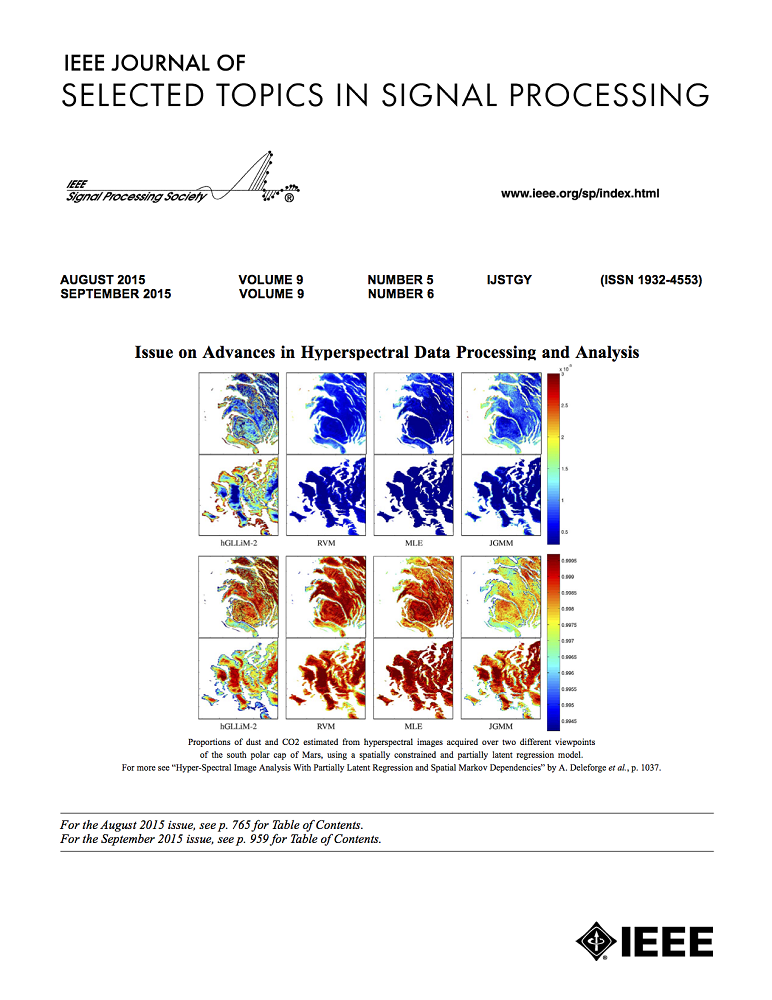Holographic Imaging With XL-MIMO and RIS: Illumination and Reflection Design
IF 8.7
1区 工程技术
Q1 ENGINEERING, ELECTRICAL & ELECTRONIC
IEEE Journal of Selected Topics in Signal Processing
Pub Date : 2024-06-20
DOI:10.1109/JSTSP.2024.3417356
引用次数: 0
Abstract
This paper addresses a near-field imaging problem utilizing extremely large-scale multiple-input multiple-output (XL-MIMO) antennas and reconfigurable intelligent surfaces (RISs) already in place for wireless communications. To this end, we consider a system with a fixed transmitting antenna array illuminating a region of interest (ROI) and a fixed receiving antenna array inferring the ROI's scattering coefficients. Leveraging XL-MIMO and high frequencies, the ROI is situated in the radiative near-field region of both antenna arrays, thus enhancing the degrees of freedom (DoF) (i.e., the channel matrix rank) of the illuminating and sensing channels available for imaging, here referred to as利用 XL-MIMO 和 RIS 进行全息成像:照明和反射设计
本文利用超大规模多输入多输出(XL-MIMO)天线和已用于无线通信的可重构智能表面(RIS)来解决近场成像问题。为此,我们考虑使用一个固定发射天线阵列照亮感兴趣区域(ROI)和一个固定接收天线阵列推断感兴趣区域散射系数的系统。利用 XL-MIMO 和高频,ROI 位于两个天线阵列的辐射近场区域,从而增强了可用于成像的照明和传感信道的自由度(DoF)(即信道矩阵秩),这里称为全息成像。为了进一步提高成像性能,我们通过求解一个最小-最大优化问题来优化照明波形,该问题的目标函数是图像估计的均方误差 (MSE) 上限。此外,我们还考虑到 RIS 的存在,并推导出其最佳反射系数,从而应对非视距(NLOS)场景的挑战。数值结果研究了照明优化、几何配置(单静态和双静态)、照明和传感通道的 DoF、图像估计精度和图像复杂度之间的相互作用。
本文章由计算机程序翻译,如有差异,请以英文原文为准。
求助全文
约1分钟内获得全文
求助全文
来源期刊

IEEE Journal of Selected Topics in Signal Processing
工程技术-工程:电子与电气
CiteScore
19.00
自引率
1.30%
发文量
135
审稿时长
3 months
期刊介绍:
The IEEE Journal of Selected Topics in Signal Processing (JSTSP) focuses on the Field of Interest of the IEEE Signal Processing Society, which encompasses the theory and application of various signal processing techniques. These techniques include filtering, coding, transmitting, estimating, detecting, analyzing, recognizing, synthesizing, recording, and reproducing signals using digital or analog devices. The term "signal" covers a wide range of data types, including audio, video, speech, image, communication, geophysical, sonar, radar, medical, musical, and others.
The journal format allows for in-depth exploration of signal processing topics, enabling the Society to cover both established and emerging areas. This includes interdisciplinary fields such as biomedical engineering and language processing, as well as areas not traditionally associated with engineering.
 求助内容:
求助内容: 应助结果提醒方式:
应助结果提醒方式:


